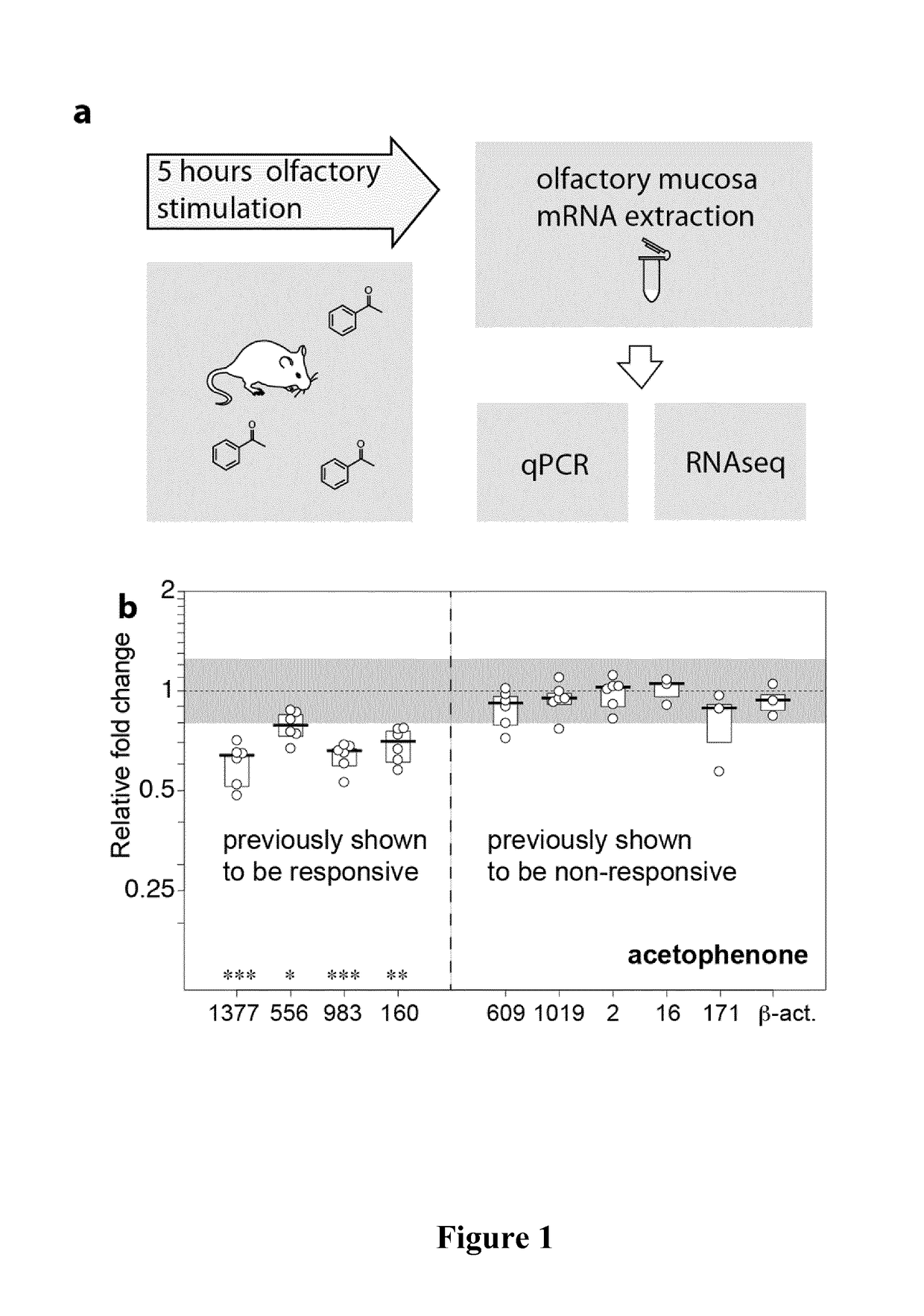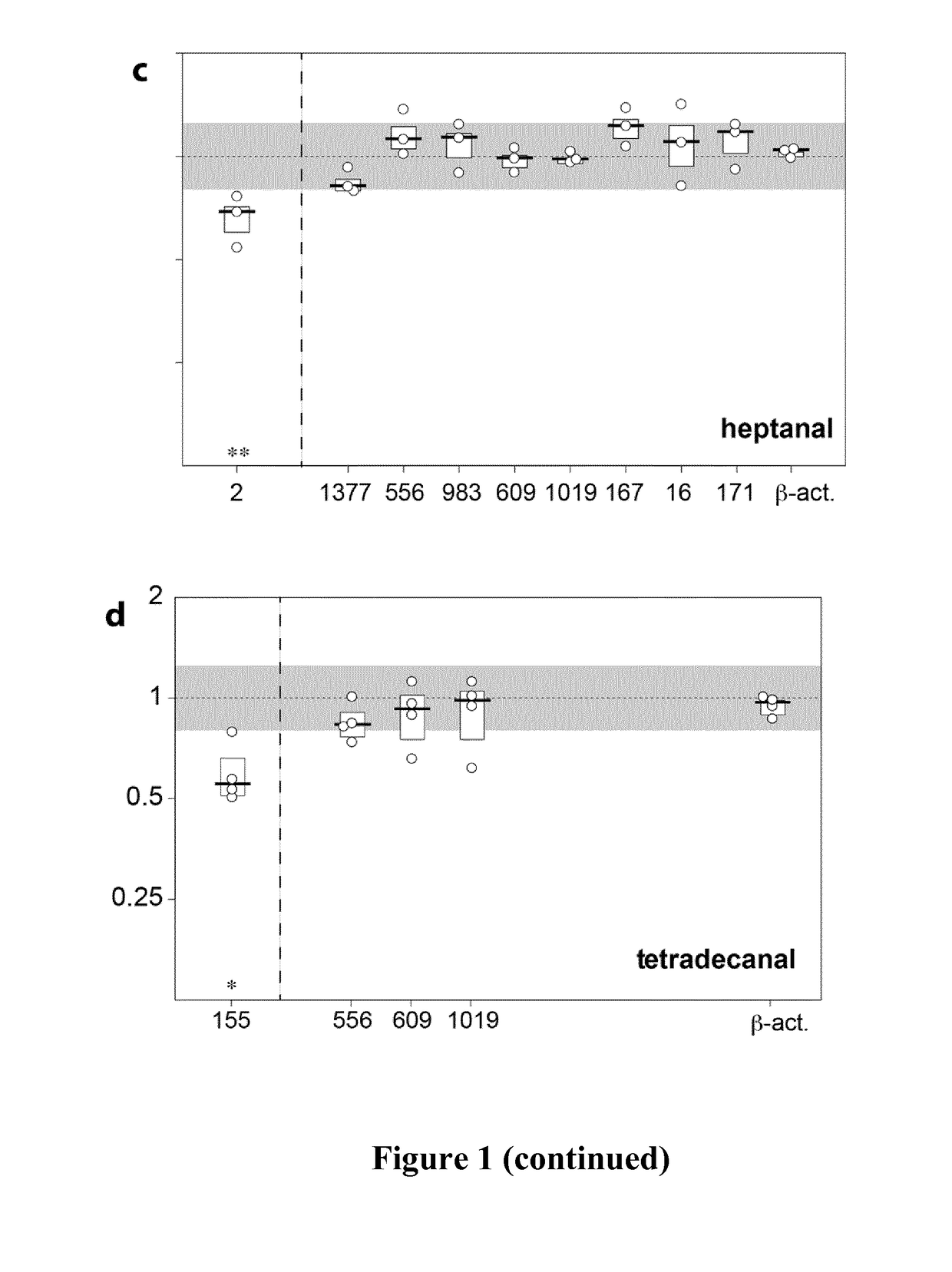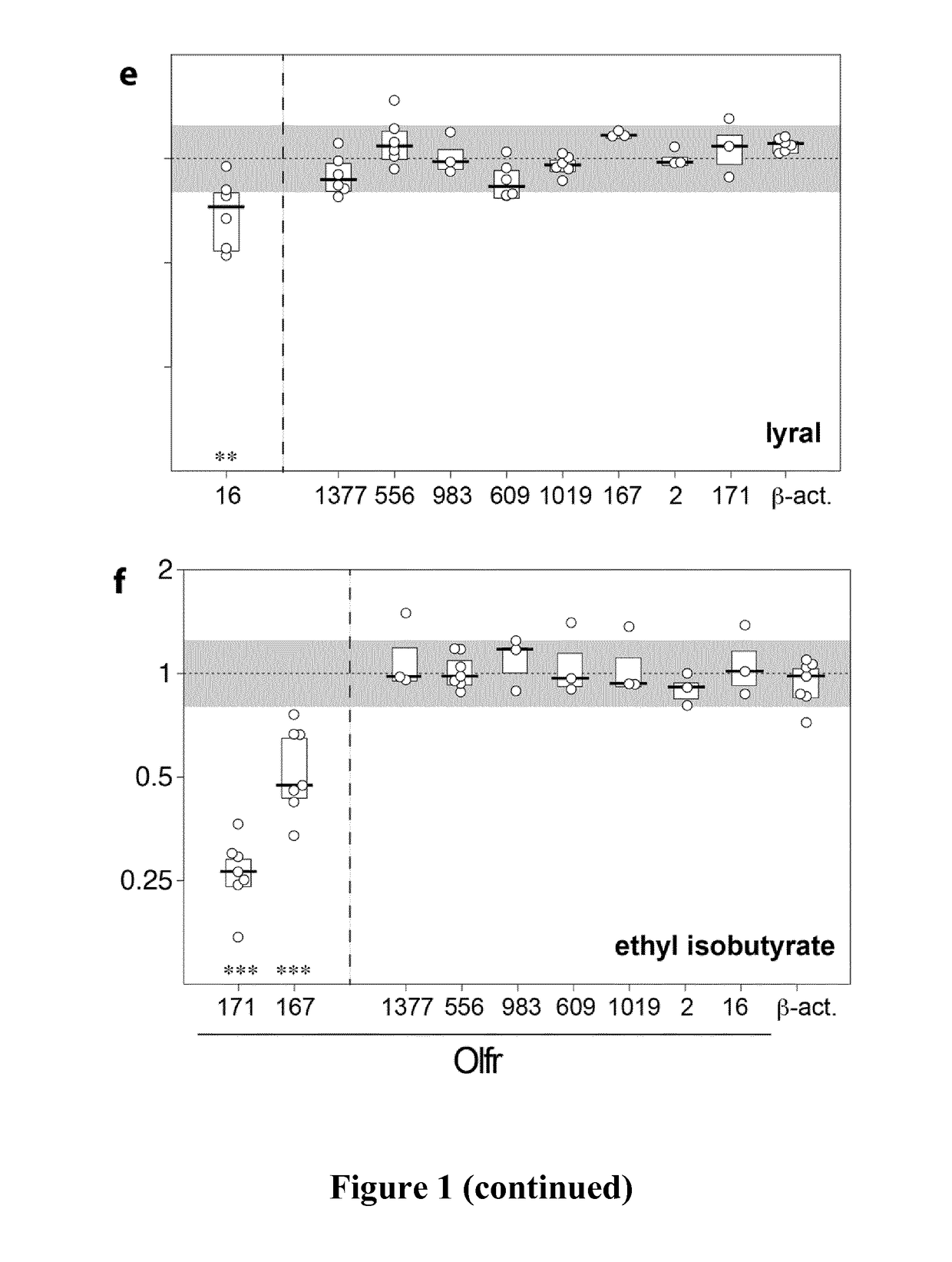Methods for identifying a receptor for a ligand and uses thereof
- Summary
- Abstract
- Description
- Claims
- Application Information
AI Technical Summary
Benefits of technology
Problems solved by technology
Method used
Image
Examples
example 1
Method of the Invention For Deorphanizing Odorant Receptors in Mice, With In Vivo Exposure to Odorant
[0202]Adult C57BL / 6 mice were exposed to 5% ethyl isobutyrate for 5 hours, and the level of transcripts of odorant receptors' genes were measured by RT-qPCR on extracts of olfactory epithelia from these mice, as described in the materials and methods section.
[0203]In the sensory neuroepithelium of adult C57BL / 6 mice, the mRNA concentration of Olfr171 and Olfr167, was significantly decreased when exposed to 5% ethyl isobutyrate for 5 hours (ethylisobutyrate was previously shown to be an agonist for Olfr 171 and Olfr67) (74% and 47% relative to unexposed controls respectively, n=7 mice) (FIG. 1a, f). The concentration of none of the control odorant receptor genes (8 genes) was significantly affected by ethyl isobutyrate exposure (a margin of ±20% relative to control mice was considered not significant for the in vivo exposure approach, grey zone on FIG. 1).
[0204]To test if this activat...
example 2
Method of the Invention For Deorphanizing Odorant Receptors in Mice, With Ex Vivo Exposure to Odorant
[0210]Mouse olfactory epithelia were collected and kept in vitro in ACSF medium where they were exposed for 2 hours to 50 μM ethyl isobutyrate. The number of transcripts for Olfr genes was then evaluated by qPCR, and those of Olfr167 and Olfr171 were both repressed after agonist exposure. Ethyl isobutyrate was previously shown to be an agonist for Olfr167 and Olfr171.
example 3
Large Scale Odorant Receptor Deorphanization According to the Method of the Invention
[0211]Examples 1 and 2 demonstrate a solid correlation between olfactory neuron activation and olfactory receptor mRNA downregulation. Current example aimed at demonstrating the feasibility of the method of the invention as a large scale method for receptor deorphanization following olfactory stimulation. An RNAseq approach was chosen to evaluate potential modulations of olfactory receptor gene transcripts.
[0212]Acetophenone was tested, which downregulates the messenger levels of Olfr1377, Olfr556, Olfr983 and Olfr160 (FIG. 1).
[0213]Mice (n=6) were exposed to 5% acetophenone or to a “neutral” control condition for 5 hours. An olfactory cDNA library corresponding to each animal was deep sequenced and the ratios of odorant receptor mRNA concentrations relative to controls were plotted (FIG. 3). Odorant receptor genes that exhibited a transcriptional reduction consistently larger than 20% were consider...
PUM
 Login to view more
Login to view more Abstract
Description
Claims
Application Information
 Login to view more
Login to view more - R&D Engineer
- R&D Manager
- IP Professional
- Industry Leading Data Capabilities
- Powerful AI technology
- Patent DNA Extraction
Browse by: Latest US Patents, China's latest patents, Technical Efficacy Thesaurus, Application Domain, Technology Topic.
© 2024 PatSnap. All rights reserved.Legal|Privacy policy|Modern Slavery Act Transparency Statement|Sitemap



